Biohacking aims to improve health and extend lifespan through targeted lifestyle changes. People who practice biohacking use science and technology to optimize their bodies and minds. They often try new ways to boost energy, focus, and overall wellness.
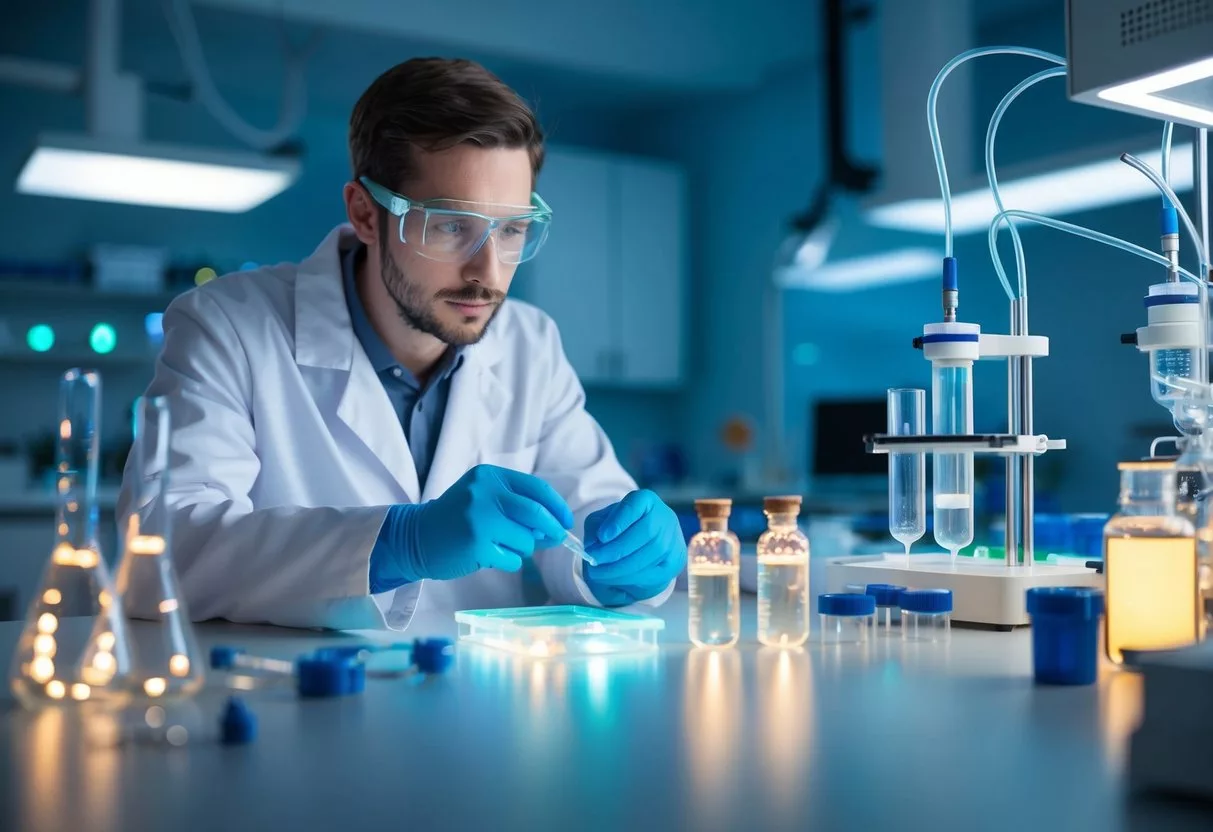
Biohacking can promote longevity by helping reduce the risk of chronic diseases and improving quality of life. Some common biohacks include changing diet, sleep habits, and exercise routines. Others involve using wearable devices to track health data or trying alternative therapies.
As interest in biohacking grows, more people are looking for ways to take control of their health.
While some biohacks are simple, others can be complex or even risky. It’s important to research any new health practice and talk to a doctor before making big changes.
Key Takeaways
- Biohacking uses science and technology to improve health and longevity
- Common biohacks target diet, sleep, exercise, and stress management
- Careful research is needed before trying new biohacking methods
What Is Biohacking?
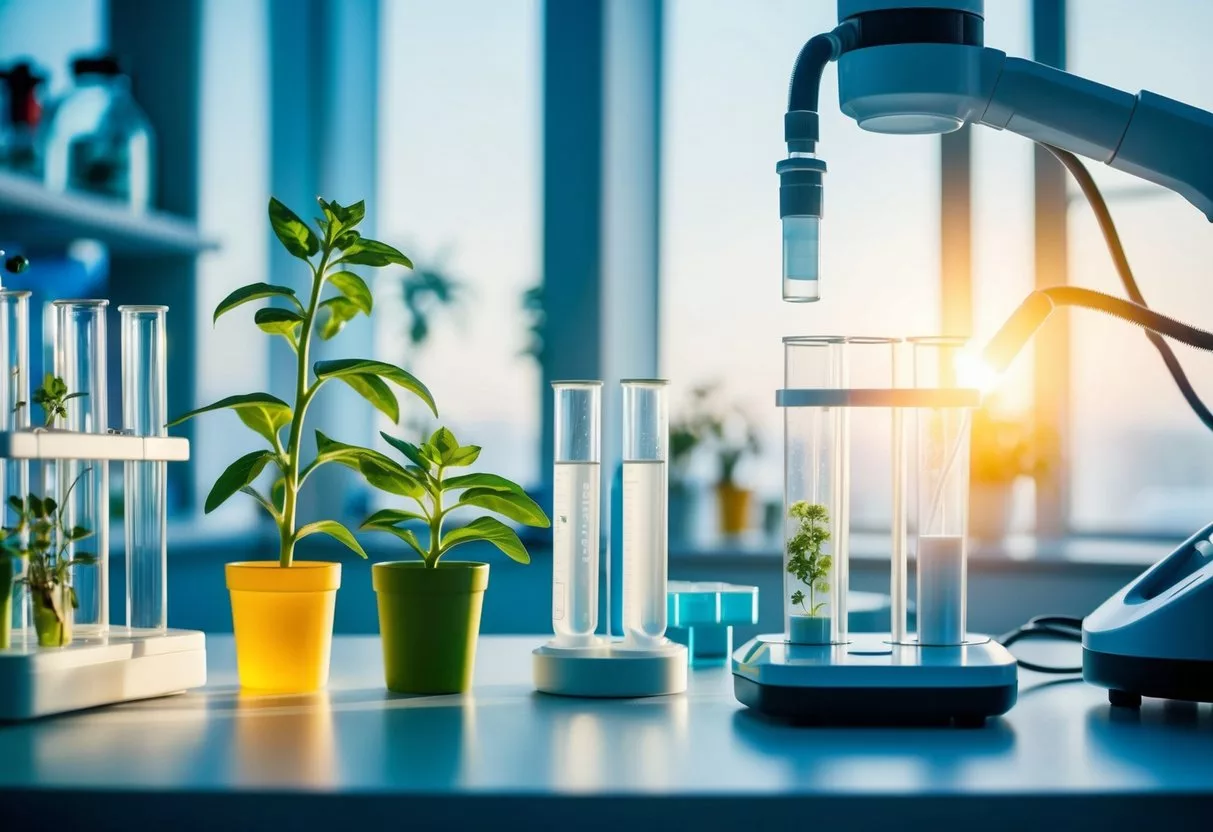
Biohacking uses science and technology to improve health and performance. It aims to optimize the body and mind through various methods.
Defining Biohacking
Biohacking is purposely changing biology to enhance physical and mental abilities. It combines scientific research, tech, and lifestyle changes to reach health goals.
Biohackers try to take control of their bodies and brains. They use data and experiments to find what works best for them.
The practice draws from many fields. These include genetics, neuroscience, nutrition, and psychology.
Types of Biohacking
Nutrigenomics focuses on how food affects genes. It uses diet to improve health and slow aging.
Grinder biohacking involves tech implants or devices. This can mean putting chips under the skin or using external gadgets.
DIY biology brings lab work to homes and shared spaces. People do their own experiments and genetic testing.
Neurohacking aims to boost brain function. It may use supplements, devices, or mind techniques.
The Biohacking Spectrum
Biohacking ranges from simple to extreme.
On one end are basic lifestyle changes. These include diet, exercise, and sleep habits.
In the middle are more advanced techniques. Examples are using saunas, doing cold therapy, or trying fasting.
The far end involves risky or untested methods. This might mean using unproven supplements or tech implants.
Some biohacks are backed by science. Others lack solid proof. It’s key to research and be careful when trying new techniques.
Diet and Nutrition

Food choices and eating patterns play a key role in biohacking for longevity. Certain dietary approaches may help slow aging and boost health.
Nutrient-Dense Foods
Nutrient-dense foods form the foundation of a longevity-focused diet. These foods pack a lot of nutrition into each calorie. Some top choices include:
• Leafy greens like kale and spinach • Berries rich in antioxidants • Fatty fish high in omega-3s • Nuts and seeds
Colorful fruits and vegetables provide important phytonutrients. Fermented foods support gut health with beneficial probiotics.
Healthy fats from avocados, olive oil, and nuts fight inflammation. Quality proteins from fish, eggs, and legumes help maintain muscle mass.
Intermittent Fasting and Longevity
Intermittent fasting involves cycling between periods of eating and fasting. Common methods include:
• 16/8: Fasting for 16 hours, eating within an 8-hour window • 5:2: Eating normally 5 days, restricting calories 2 days per week • Eat-stop-eat: 24-hour fasts once or twice a week
Fasting may trigger cellular repair processes like autophagy. It can improve insulin sensitivity and reduce inflammation.
Some studies show intermittent fasting may extend lifespan in animals. More research is needed on long-term effects in humans.
Supplements and Nootropics
Certain supplements may fill nutrient gaps or provide extra benefits. Common longevity-focused supplements include:
• Omega-3 fatty acids
• Vitamin D
• Magnesium
• CoQ10
• Resveratrol
Nootropics aim to enhance brain function. Examples are:
• Caffeine
• L-theanine
• Bacopa monnieri
• Rhodiola rosea
It’s important to consult a doctor before starting any new supplement regimen. Quality and dosage matter for safety and effectiveness.
Nutrigenomics and Personalized Nutrition
Nutrigenomics studies how genes and diet interact. This field aims to create personalized nutrition plans based on genetic profiles.
Genetic tests can reveal how a person may respond to certain foods or nutrients. For example, some people may process caffeine faster than others.
Customized diets based on genetics might optimize health. A person with a certain gene variant might benefit from more omega-3s.
Nutrigenomics is still a developing field. More research is needed to fully understand gene-diet interactions.
Sleep Optimization
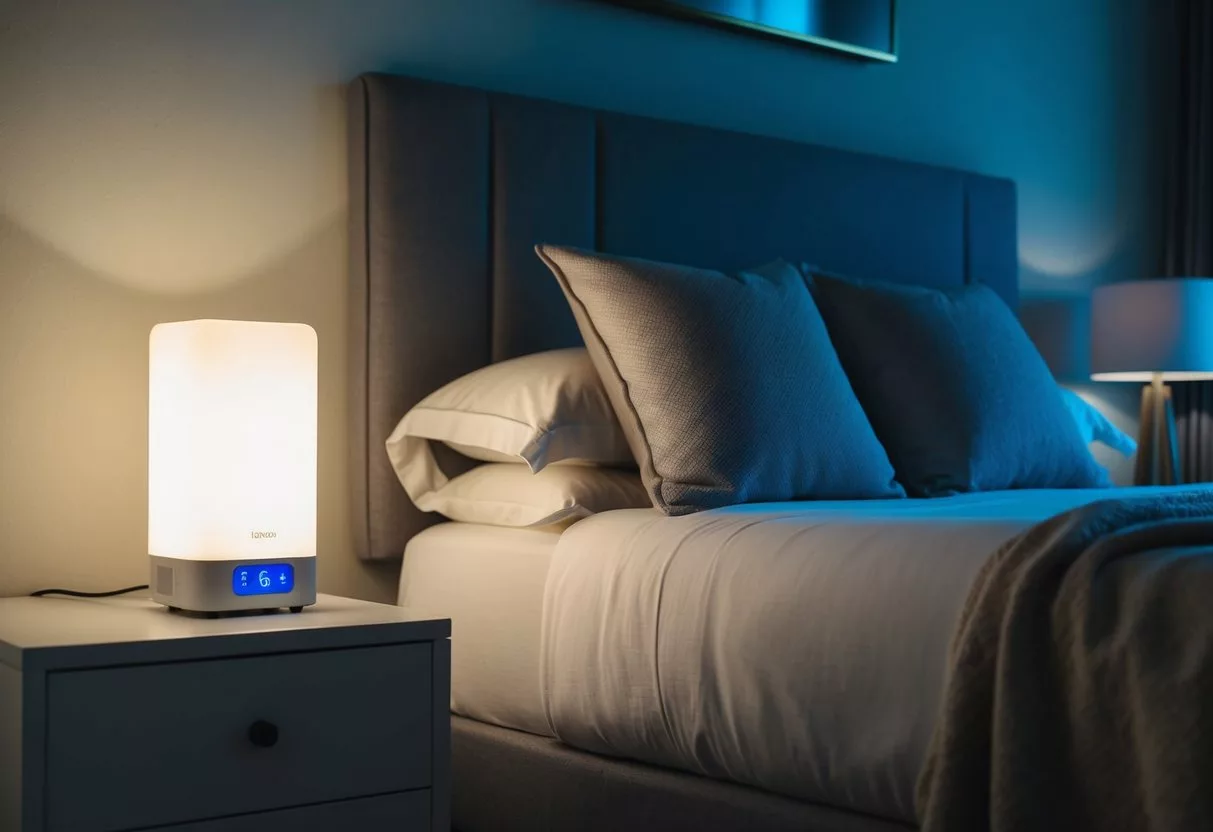
Getting enough high-quality sleep is key for living longer and feeling better. Good sleep helps repair cells, balance hormones, and keep the brain healthy.
Improving Sleep Quality
Quality sleep is vital for health and longevity. To improve sleep quality:
• Stick to a consistent sleep schedule
• Create a relaxing bedtime routine
• Avoid screens 1-2 hours before bed
• Keep the bedroom cool and dark
• Use a comfortable mattress and pillows
Sleep trackers can help monitor sleep patterns. These devices measure things like how long you sleep and how often you wake up.
Many people find white noise machines or relaxing nature sounds helpful for falling asleep faster.
The Role of Circadian Rhythms
Circadian rhythms are the body’s natural 24-hour cycles. They affect sleep, hormone levels, and other functions.
To sync circadian rhythms:
• Get sunlight early in the day
• Avoid bright lights at night
• Eat meals at regular times
• Exercise consistently
Blue light blocking glasses can help at night. They filter out blue light from screens and LED bulbs that can disrupt sleep cycles.
Some people use light therapy devices in the morning. These mimic sunlight to help wake up the body and mind.
Sleep Environment and Technology
The bedroom setup greatly impacts sleep quality. A cool, quiet, and dark room is best for good sleep.
Helpful sleep tech includes:
• Blackout curtains
• White noise machines
• Smart thermostats
• Sleep-tracking mattress pads
Air quality matters too. Using an air purifier can reduce allergens and improve breathing during sleep.
Sleep-inducing pillows with special materials or cooling gel inserts may enhance comfort.
Weighted blankets provide gentle pressure that some find calming. This can lead to falling asleep faster and waking less often.
Exercise and Physical Activity
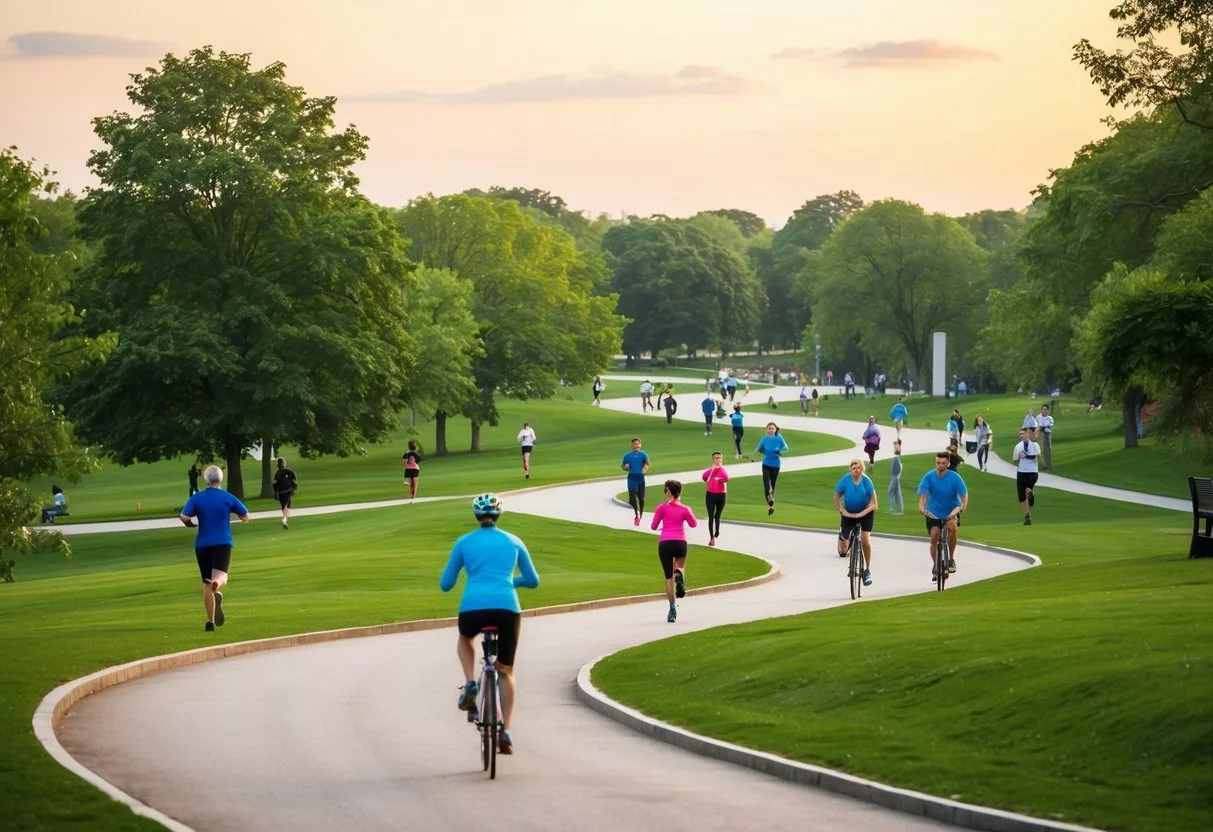
Exercise and movement are key parts of biohacking for a longer life. Regular physical activity helps keep the body strong and healthy. Different types of exercise offer unique benefits for longevity.
High-Intensity Interval Training (HIIT)
HIIT involves short bursts of intense exercise followed by rest periods. This type of workout boosts metabolism and burns fat quickly. HIIT can improve heart health, build endurance, and increase muscle strength in less time than steady-state cardio.
A typical HIIT session lasts 15-30 minutes. It may include exercises like:
• Sprinting
• Burpees
• Mountain climbers
• Jump squats
HIIT workouts can be done 2-3 times per week. They should be balanced with other forms of exercise and rest days to avoid overtraining.
Strength and Resistance Training
Lifting weights and doing bodyweight exercises helps maintain muscle mass and bone density as we age. This is crucial for staying mobile and independent later in life.
Key benefits of strength training include:
• Increased metabolism
• Better balance and coordination
• Reduced risk of injury
• Improved insulin sensitivity
Aim for 2-3 strength sessions per week, targeting all major muscle groups. Start with bodyweight moves and add weights gradually as strength improves.
Incorporating Movement into Daily Life
Regular movement throughout the day is just as important as structured exercise. Small changes can add up to big health benefits over time.
Try these simple ways to move more:
• Take the stairs instead of the elevator
• Have walking meetings
• Use a standing desk for part of the workday
• Do bodyweight exercises during TV commercial breaks
The goal is to avoid long periods of sitting. Even short bursts of activity can improve physical performance and overall health.
Mental and Cognitive Enhancement
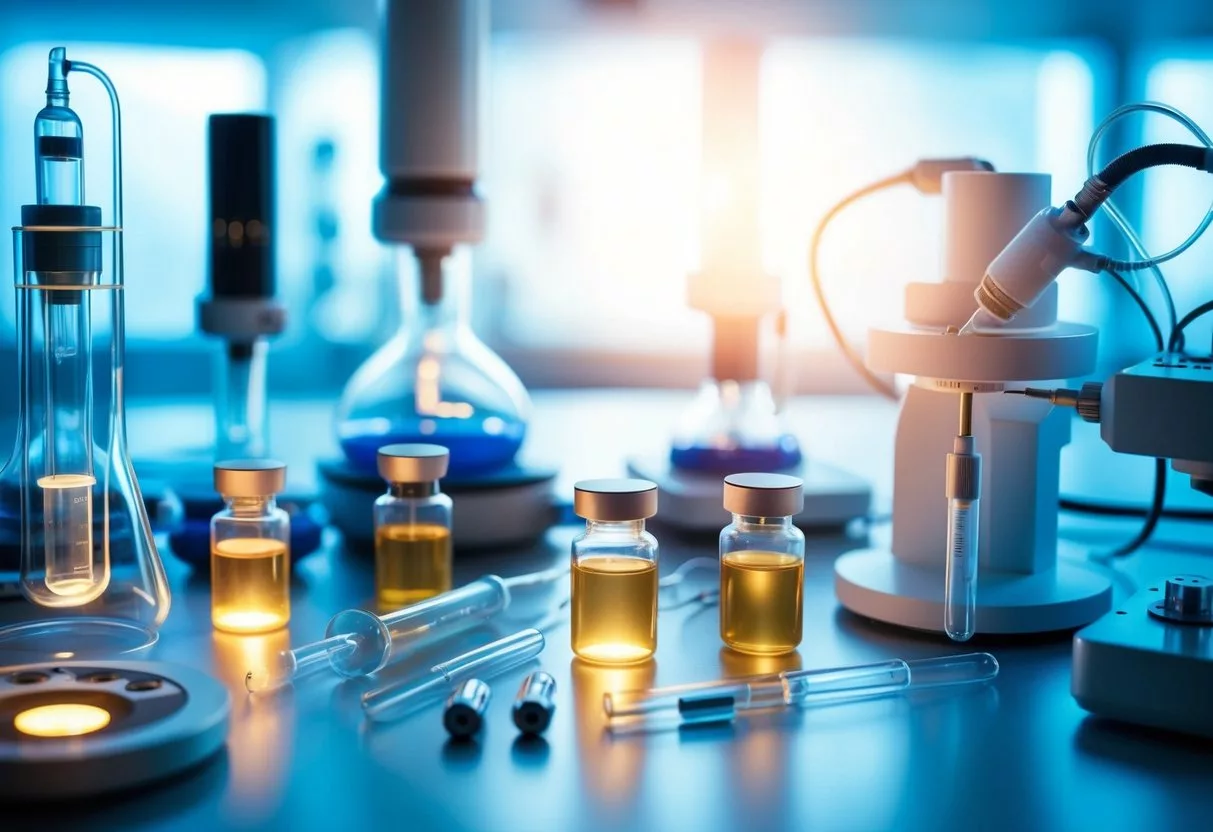
Biohacking techniques can boost brain power and mental performance. These methods aim to sharpen focus, improve memory, and enhance overall cognitive abilities.
Meditation and Mindfulness
Meditation and mindfulness practices are key tools for mental biohacking. They help reduce stress and improve brain function.
Regular meditation can increase gray matter in the brain. This leads to better memory, decision-making, and emotional control.
Mindfulness exercises train the mind to stay present. They can be done anywhere, anytime.
Simple techniques include:
• Deep breathing
• Body scans
• Focused attention on senses
These practices can lower anxiety and boost mental clarity. Many apps and guided programs make it easy to start a mindfulness routine.
Flow States and Peak Performance
Flow is a state of deep focus and productivity. It’s when a person is fully immersed in a task. In flow, time seems to fly by and work feels effortless.
To reach flow states more often:
• Remove distractions
• Set clear goals
• Choose tasks that challenge but don’t overwhelm
Peak performance happens when the mind and body work at their best. This can be achieved through:
- Proper sleep
- Good nutrition
- Regular exercise
- Mental training
These habits create the right conditions for flow and top performance.
Enhancing Cognitive Function
Cognitive enhancement aims to improve mental skills like memory, focus, and problem-solving. Some biohacks for better brain function include:
• Brain training games and puzzles
• Learning new skills or languages
• Nootropic supplements like bacopa or omega-3s
Diet also plays a big role in brain health. Foods rich in antioxidants and healthy fats can boost cognitive function. Examples are blueberries, nuts, and fatty fish.
Getting enough sleep is crucial for memory and learning. Most adults need 7-9 hours per night for optimal brain function.
Healthspan and Disease Prevention
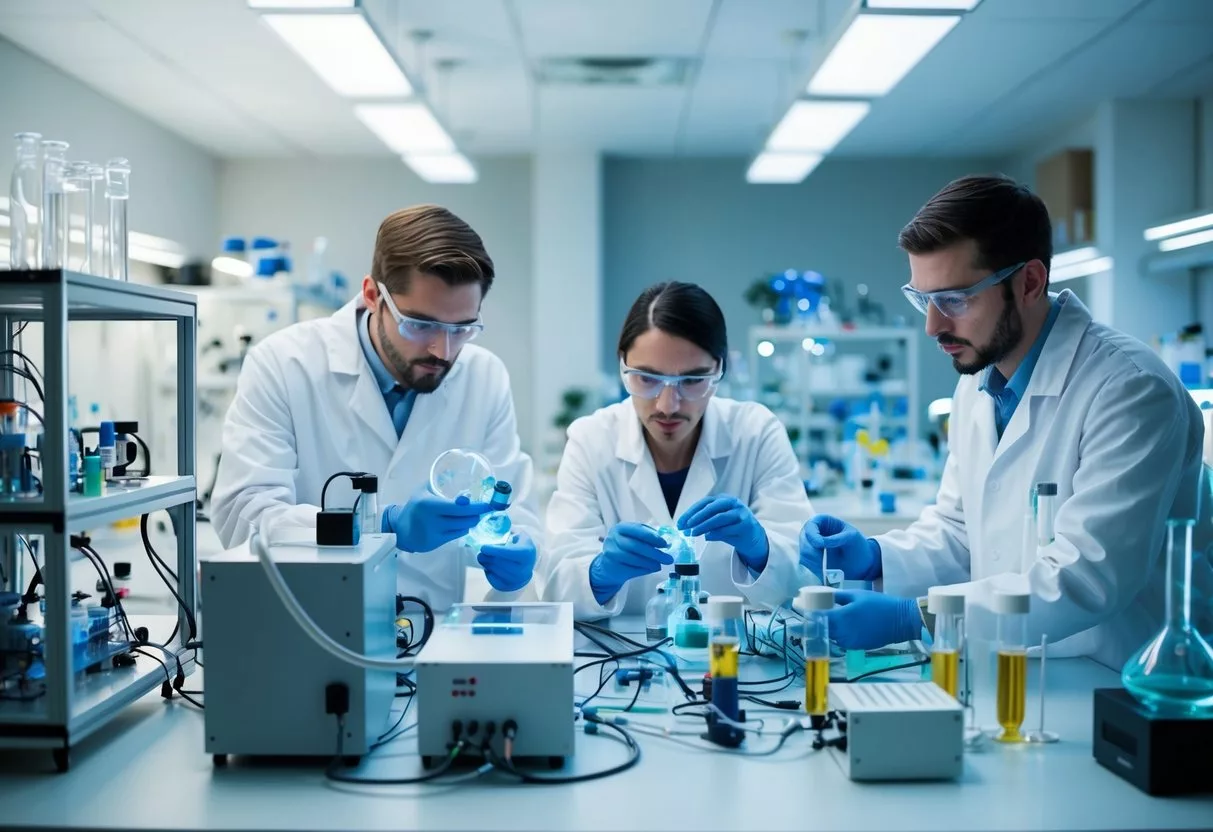
Healthspan focuses on living disease-free and maintaining good health as we age. It’s closely linked to preventing chronic diseases and making smart lifestyle choices.
Understanding Healthspan vs. Lifespan
Healthspan refers to the years a person lives in good health. Lifespan is the total number of years lived. The gap between healthspan and lifespan is about 9 years on average.
This means many people spend their final years dealing with health issues. Improving healthspan aims to shrink this gap.
Better healthspan can lead to:
- More active years
- Lower healthcare costs
- Higher quality of life in later years
Preventive Medicine and Lifestyle Changes
Preventive medicine aims to stop diseases before they start. It focuses on healthy habits and early detection.
Key lifestyle changes for better healthspan:
- Regular exercise
- Balanced diet
- Stress management
- Adequate sleep
- Social connections
Regular health screenings can catch issues early. This makes treatment more effective and less costly.
Chronic Disease Management
Chronic diseases often impact healthspan. Common conditions include:
- Heart disease
- Diabetes
- Arthritis
- Cancer
Managing these conditions well is crucial for maintaining quality of life. This often involves:
- Medication
- Lifestyle adjustments
- Regular check-ups
- Patient education
New technologies help people track and manage their conditions daily.
The Role of Genetics and Epigenetics
Genes play a part in how we age and our disease risks. But they’re not the whole story.
Epigenetics looks at how lifestyle and environment affect gene expression. This means our choices can influence how our genes behave.
Some ways to positively impact epigenetics:
- Eat a nutrient-rich diet
- Stay physically active
- Avoid toxins
- Manage stress
Genetic testing can reveal disease risks. This knowledge allows for more targeted prevention strategies.
Holistic Practices and Alternative Therapies
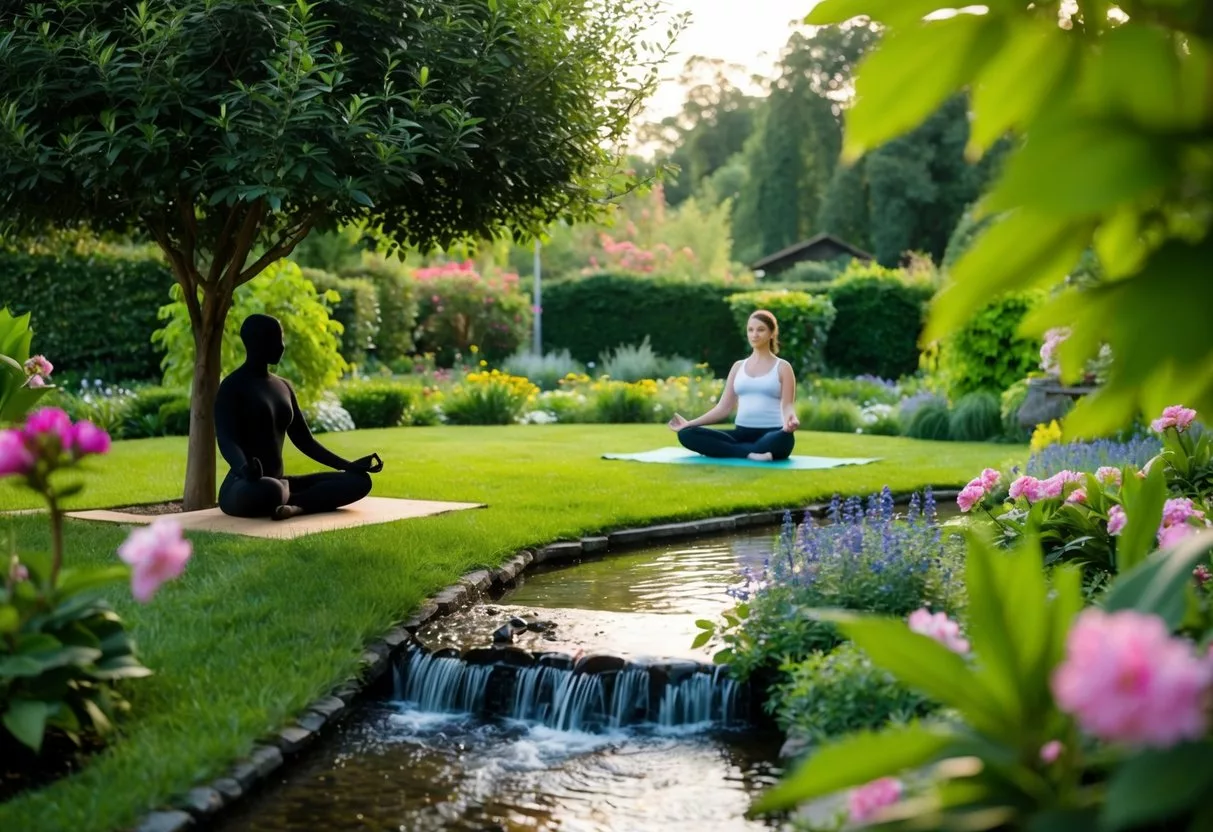
Biohackers use various holistic methods to boost longevity. These practices aim to enhance overall health and slow aging through natural means.
Cryotherapy and Cold Exposure
Cryotherapy involves brief exposure to very cold temperatures. It may reduce inflammation and boost metabolism. Cold showers and ice baths are common forms of cold exposure.
These methods can improve circulation and mental clarity. They may also strengthen the immune system. Some people report feeling more energized after cold therapy.
Experts suggest starting slowly with cold exposure. Begin with short cold showers or ice baths. Gradually increase duration as tolerance builds.
Red Light Therapy and Photobiomodulation
Red light therapy uses specific wavelengths to stimulate cells. It may improve skin health and reduce joint pain.
This therapy can boost collagen production and cellular energy. Some users report faster wound healing and reduced muscle soreness.
Red light devices come in various forms, from handheld units to full-body panels. Treatment times vary but typically range from 5 to 20 minutes per session.
Breathwork Techniques
Breathwork involves controlled breathing patterns. It can lower stress and improve oxygen flow in the body.
Popular techniques include:
- Box breathing (equal inhale, hold, exhale, hold)
- Wim Hof method (deep breaths followed by breath holds)
- 4-7-8 breathing (inhale for 4, hold for 7, exhale for 8)
Regular practice may enhance lung capacity and mental focus. Some people report better sleep and reduced anxiety with consistent breathwork.
Detoxification and Environmental Factors
Detoxification aims to remove harmful substances from the body. This can involve dietary changes, supplements, or specific therapies.
Common detox methods include:
- Infrared saunas
- Chelation therapy
- Juice cleanses
Reducing exposure to environmental toxins is also key. This may involve:
- Using air purifiers
- Drinking filtered water
- Choosing organic foods
Some biohackers track their toxin levels through regular testing. They adjust their practices based on these results.
Monitoring and Biofeedback
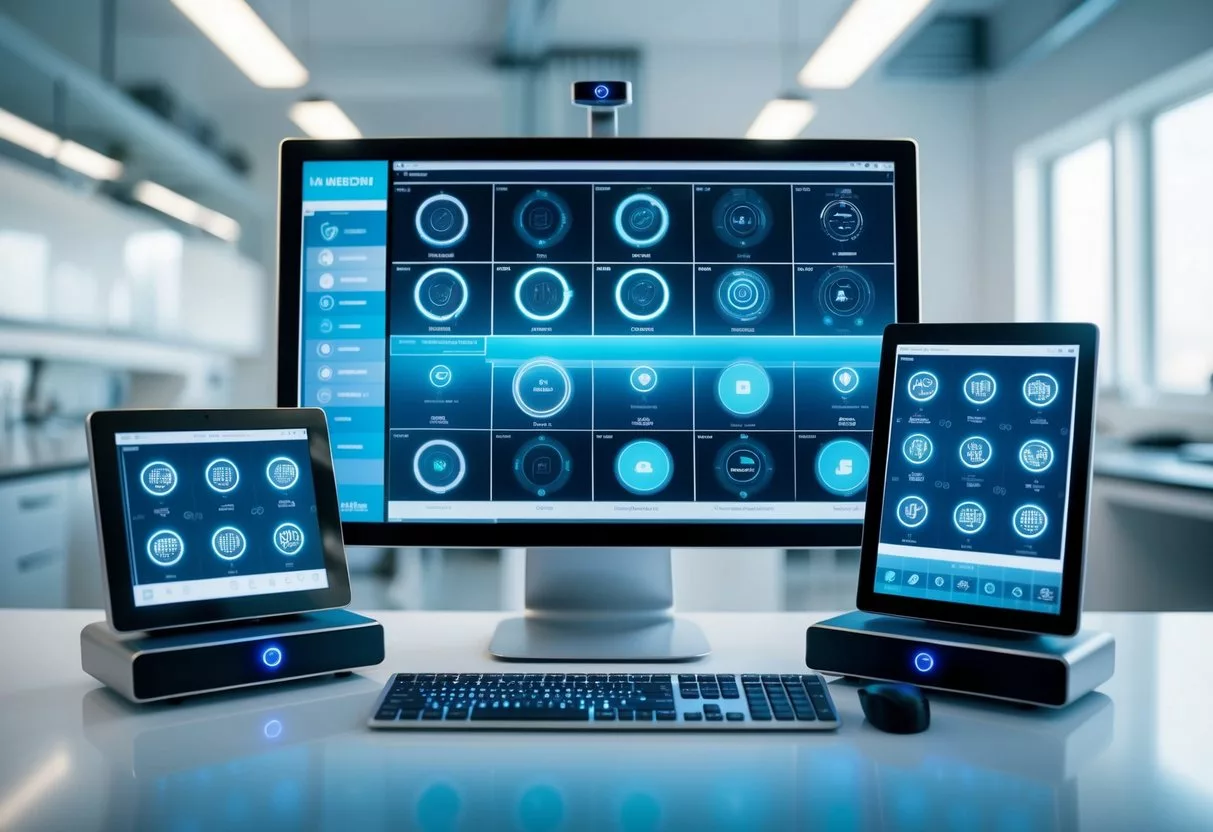
Tracking health data helps people make better choices for their wellness. New tools let us see how our bodies work in real-time.
Wearable Technology and Health Monitors
Smartwatches and fitness trackers have become popular for monitoring health. These devices track heart rate, sleep patterns, and physical activity. Some newer models can even measure blood oxygen levels and detect irregular heartbeats.
Wearables give users instant feedback on their health stats. This data helps people set goals and change habits.
For example, seeing low daily step counts might encourage someone to walk more.
Many wearables sync with smartphone apps. This makes it easy to view trends over time. Some devices also send alerts for things like high stress levels or poor sleep quality.
Continuous Glucose Monitors (CGMs)
CGMs track blood sugar levels throughout the day and night. A tiny sensor under the skin measures glucose in body fluid. The device sends readings to a smartphone or receiver every few minutes.
CGMs were first made for people with diabetes. Now, they’re used by others to learn about their body’s response to food and exercise.
Seeing glucose spikes after meals can guide food choices.
These devices show how different factors affect blood sugar. The data helps users make choices to keep their glucose levels steady.
Tracking Biological Age
Biological age tests measure how well the body is aging compared to actual years lived. These tests look at different markers in the body.
This can include DNA, blood tests, and physical measurements.
Some companies offer at-home test kits. Users send in samples and get reports on their biological age. The results can show which areas of health need improvement.
Tracking biological age over time can show if lifestyle changes are working. It gives a more complete picture of health than just looking at individual factors. This information helps people make targeted choices to slow down aging.
Lifestyle Factors and Wellness

Everyday choices have a big impact on how long and well we live. Small changes can add up to big results for our health and lifespan.
The Impact of Stress and Stress Management
Stress takes a toll on our bodies and minds. It can speed up aging and lead to health problems. Learning to manage stress is key for living longer and feeling better.
Biohacking for longevity includes finding ways to reduce stress. Some effective methods are:
• Deep breathing
• Meditation
• Regular exercise
• Getting enough sleep
These practices help calm the body and mind. They lower stress hormones that can damage cells over time.
Promoting a Balanced Lifestyle
A balanced lifestyle supports health and longevity. This means eating well, moving regularly, and getting proper rest.
A healthy diet includes lots of fruits, vegetables, and whole grains. It limits processed foods and sugar.
Regular exercise keeps the body strong and helps prevent many diseases.
Good sleep is just as important as diet and exercise. Most adults need 7-9 hours each night. Quality sleep helps the body repair and recharge.
Making time for hobbies and social connections is also key. These activities bring joy and meaning to life.
The Power of Gratitude and Positive Mindset
Our thoughts and attitudes affect our health. A positive mindset can boost the immune system and lower stress.
Practicing gratitude is a simple way to build positivity. It involves noticing and appreciating good things in life.
This can be done through:
• Keeping a gratitude journal
• Sharing thanks with others
• Reflecting on positive moments each day
A positive outlook helps people cope better with challenges. It can lead to healthier behaviors and choices. This mindset supports overall wellness and may contribute to a longer life.
Frequently Asked Questions
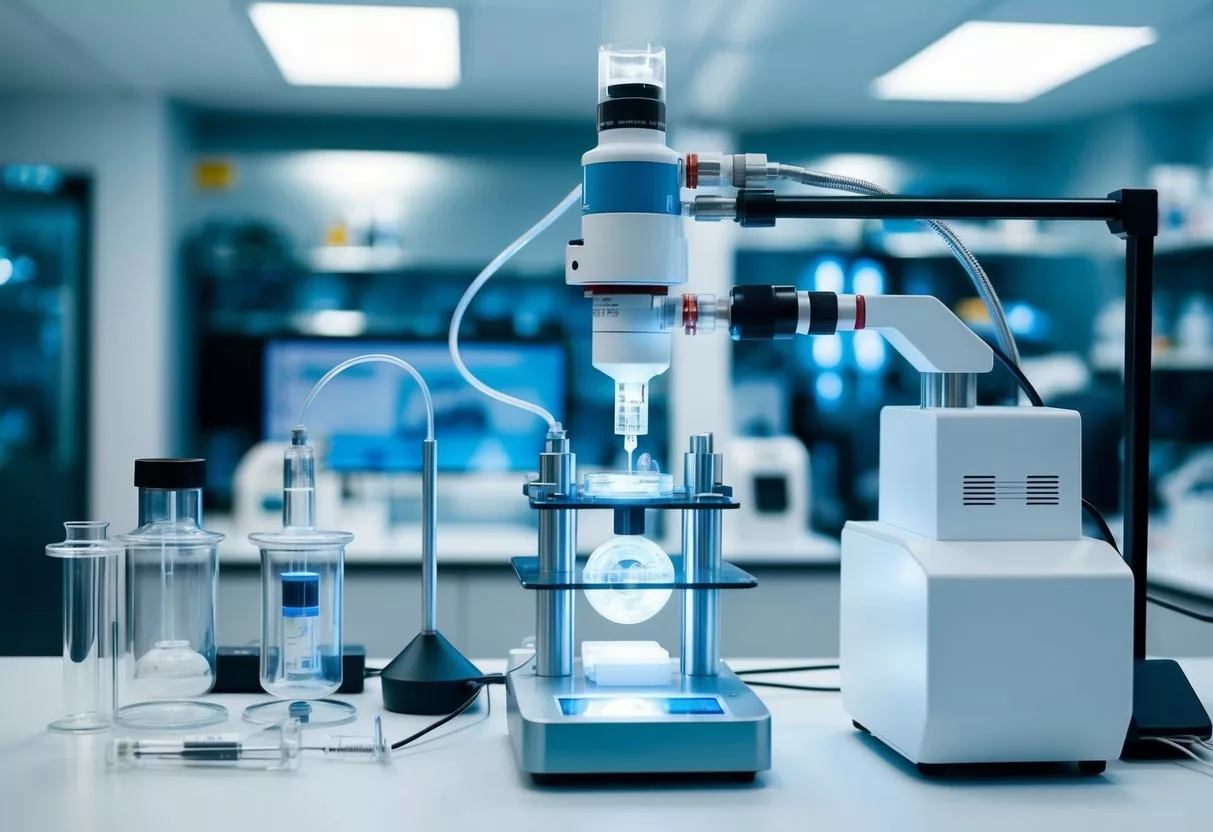
Biohacking for longevity involves various strategies, from supplements to diet and lifestyle changes. These approaches aim to optimize health and extend lifespan, with specific considerations for different age groups and genders.
What supplements are commonly used in biohacking to promote longevity?
Popular supplements for longevity biohacking include NAD+ boosters, resveratrol, and omega-3 fatty acids.
Antioxidants like vitamin C and E are also frequently used.
Some biohackers incorporate adaptogens such as ashwagandha and rhodiola to manage stress.
Collagen peptides and coenzyme Q10 are often taken to support skin health and cellular energy production.
How does diet play a role in biohacking for improved lifespan?
Diet is a cornerstone of biohacking for longevity. Many biohackers follow ketogenic or low-carb diets to reduce inflammation and improve metabolic health.
Intermittent fasting is another popular dietary approach. It can trigger autophagy, a cellular cleaning process that may slow aging.
Some biohackers also focus on consuming nutrient-dense, organic foods to minimize toxin exposure.
What specific biohacking strategies are beneficial for women’s health and aging?
Women-specific biohacking strategies often focus on hormonal balance.
This may include seed cycling or adaptogens to support the menstrual cycle.
Bone health is another key area, with many women incorporating strength training and calcium-rich foods.
Some biohackers use red light therapy to support skin health and collagen production.
Are there unique biohacking considerations for women over 50 seeking longevity?
Women over 50 often focus on strategies to manage menopause symptoms and maintain bone density.
This may include bioidentical hormone replacement therapy under medical supervision.
Muscle maintenance becomes crucial, so resistance training is often emphasized.
Some biohackers in this age group use supplements like maca or black cohosh to address hormonal changes.
Can you list lifestyle or diet hacks that contribute to increased longevity?
Key lifestyle hacks include optimizing sleep through consistent schedules and blue light blocking.
Regular exercise, particularly high-intensity interval training, is often recommended.
Diet hacks might include consuming fermented foods for gut health and drinking green tea for its antioxidants.
Some biohackers practice cold exposure or heat therapy to stimulate cellular resilience.
What are the critical pillars of biohacking that support a longer, healthier life?
Epigenetic biohacking is a critical pillar. It focuses on influencing gene expression through lifestyle choices. This includes practices like meditation and stress management.
Optimizing mitochondrial function is another key pillar. This involves strategies like exercise and specific nutrients to support cellular energy production.
Detoxification is also emphasized, with practices like sauna use and proper hydration. Many biohackers prioritize regular health tracking and data analysis to personalize their approaches.